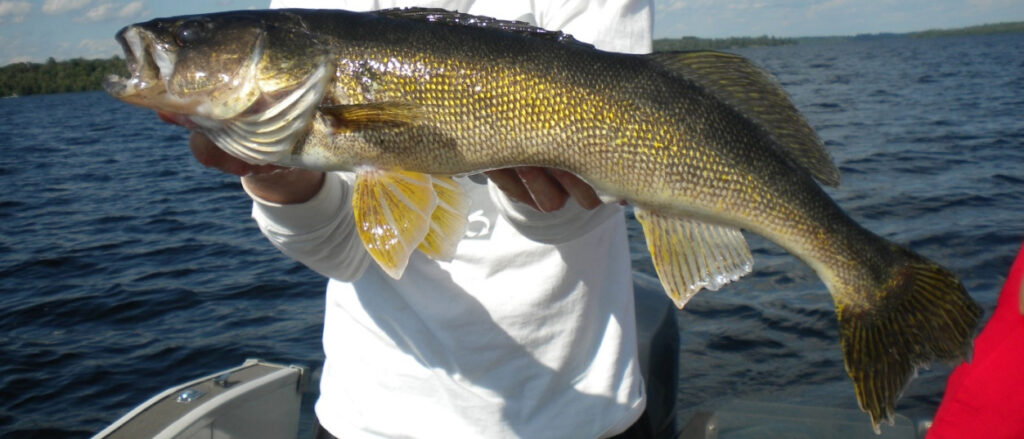Stewardship of Our Legacy: Preserving and Promoting Quality Fisheries
Walleye
The 2020 annual fall gill-net survey conducted by the Minnesota Department of Natural Resources (DNR) marked the highest lake wide Walleye catch rate in 37 years of standardized Lake Vermilion sampling at 20.4 fish/net. Although the 2020 survey result is continued evidence of an excellent Walleye fishery challenges are emerging. Impacts from the COVID-19 pandemic resulted in record levels of fishing pressure on Lake Vermilion. Other not so new challenges such as the power of the latest high frequency definition fish finding electronics, dynamic networks of hot bite reporting via the internet, and social media chatter place unprecedented constant demand on fish populations. Proactive protection of Lake Vermilion’s long held reputation as a top Minnesota Walleye fishery for future generations requires we take nuanced approaches to protect key fish in the population.
Lake Vermilion’s current 2017-2022 Fisheries Management Plan (LVMP) sets a lake wide Walleye gill-net survey abundance goal of 14 fish per net. Lake Vermilion is part of the DNR Large Lake Monitoring Program, which includes annual fisheries population assessments, water quality monitoring, and regularly scheduled creel surveys on the 10 largest lakes in Minnesota. Since 1984, standardized gill netting assessments conducted at Lake Vermilion have developed a strong set of data for science based fishery decision-making.
Since 2016, gill-net results have exceeded Lake Vermilion’s LVMP Walleye objective only twice during the current 2017-2022 plan. To ensure a bright future for Lake Vermilion’s Walleye population, selective harvest must remain a critical part of lake management. In 2017, a special Walleye slot limit regulation was enacted to protect 20 to 26 inch fish. Since 2006, protective slot limits have been in effect to manage Lake Vermilion’s Walleye population.
Selective harvest management has demonstrated itself as a potent tool to both protect populations of spawning fish and promote robust recreational opportunities for trophy fish. If the availability of large fish is a management priority, slot limits do increase biomass yield (Ahrens, Allen, Walters, 2020). Mature female Walleye biomass (i.e., measure of fish spawning stock) goals were set by the current 2017-2022 LVMP. Current slot limits are designed to protect an important segment of Walleye life history that can influence overall fishing success. Use of protective slot limits since 2006 has corresponded with a steady increase in mature female Walleye biomass. Lake Vermilion has demonstrated strong natural reproduction potential. Continuing to return large fish back to the lake will keep fishing great for years to come with Lake Vermilion’s long running strong Walleye natural recruitment productivity.
Largemouth Bass
Lake Vermilion Largemouth Bass, while not numerous, have provided quality angling opportunities in some areas of the lake, particularly certain West Vermilion basin bays. Fish up to five pounds have been documented and reported by anglers. In contrast, Smallmouth Bass are widely distributed and abundant in Lake Vermilion due to a majority of lake habitat and forage being favorable to their success. The 2017-2022 LVMP sets a goal of maintaining a self-sustaining Largemouth Bass population. Creel reports have documented an increasing population of Largemouth Bass in Lake Vermilion. Data is limited because standard survey methods have included few efforts to electroshock or net in habitat areas conducive to Largemouth bass use. This may understate Largemouth Bass in Lake Vermilion. With limited habitat and uncertainty regarding the extent of fish, releasing mature Largemouth Bass back into Lake Vermilion helps ensure that opportunities for quality fish and natural recruitment are available into the future.
Read eVermilion



